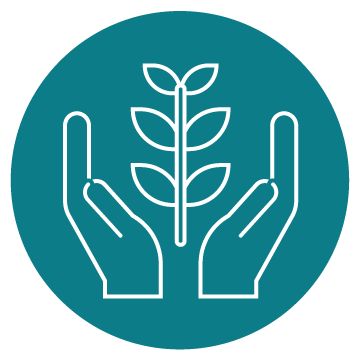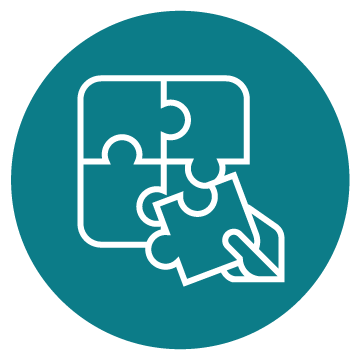Sustainable Forest Trade in the Lower Mekong Region
Lower Mekong Region Country Priorities
Different Strategies, Same Goals
The Lower Mekong Region presents diverse challenges that a 'one-size fits all' solution is never enough. Read country's priorities and strategies to combat deforestation and build a sustainable forest trade in the region.

01. Cambodia's Priorities
The goal is to reduce historical emissions from the Forestry and Land Use (FOLU) sector by 50% by the year 2030 when compared to the REDD+ baseline, as outlined in the Updated Nationally Determined Contributions (NDC). In addition, there is a Long-Term Strategy for Carbon Neutrality (LTS4CN) aimed at achieving carbon neutrality by 2050, with the FOLU sector serving as a substantial carbon sink, absorbing a total of 50 million tons of CO2 equivalent. Although numerous commitments and efforts have been identified across various platforms to advance sustainable forest management (SFM), deforestation, forest degradation, and illegal harvesting persist. The current regulatory and technical support for small and medium-scale private plantations and wood processing facilities still needs to be improved. The objective of the overall strategy is to have 20 registered and thriving small- and medium-scale forest-based enterprises or cooperatives operating in each forestry cantonment, contributing to sustainable forestry practices and economic growth.
Read More...
Achievements under the UN-REDD Lower Mekong Initiative:
 |
Supported the bilateral dialogue between Cambodia and Thailand to promote cooperation on technology for forest monitoring and sharing timber trade requirements. |
 |
A feasibility study on e-CITES permits has been carried out to assess the readiness of the relevant authorities for the implementation of issuance, control, and reporting of e-permits. |
 |
SEPAL Near Real-Time Monitoring tool has been introduced to build capacity for government partners. It is piloted in 4 target provinces, combined with capacity building on mapping elements of forest biodiversity and ecosystem services in the target provinces. |
 |
Development of a national forest certification scheme initiated and supported in Cambodia. |
 |
Cambodia prepared a communication campaign plan to raise public awareness and launch a video of substituting other hardwood for natural rosewood products. |
 |
Study Report Current Production and Trade Pattern of Agarwood in Cambodia. |
Lessons learned
Collaborative efforts in the forestry sector between the Cambodian government and neighboring countries within the Lower Mekong Region (LMR) hold significant relevance. However, the specific details of these collaborations are not sufficiently disseminated among key stakeholders. To successfully develop a national forest certification scheme, there is a pressing need for enhanced comprehension and capacity within the government regarding Quality Infrastructure, with additional support from strategic partners. Additionally, adopting near-real-time monitoring technology presents an opportunity for Cambodia to enhance its forest area surveillance capabilities and promptly identify changes in forest land, offering a potential solution to more effective and proactive forest monitoring. |

02. Lao PDR's Priorities
Increasing bilateral cooperation between the Lao People's Democratic Republic (Lao PDR) and countries in the Lower Mekong Region (LMR) is crucial to promoting sustainable forest trade in the LMR region. One critical aspect is strengthening the National Development Framework (NDF) for rosewood in Lao PDR, which aims to facilitate the withdrawal of suspended trade in Dalbergia subspecies. It is also essential to raise public awareness about forest crime to combat it effectively.
In addressing these challenges, it's imperative to scale up the existing Near Real-Time Monitoring (NRTM) system. The system should utilize the Provincial Deforestation Monitoring System (PDMS) data to inform decision-makers about the updated drivers of deforestation across the country. This includes strengthening the system for tracking environmental and social impacts and bolstering national certification standards.
Read More...
Achievements under the UN-REDD Lower Mekong Initiative:
 |
Lao PDR-Vietnam bilateral conference was organized to evaluate the results of the Memorandum of Understanding (MoU) implementation period 2017-2022, and two parties signed the new MoU period 2024-2028. |
 |
Carried out bilateral dialogues with Thailand to promote cooperation on forest monitoring and timber trade requirements with a follow-up MoU action plan. |
 |
The Training of Trainer (ToT) modules for border checkpoint officials have been developed and conducted ToT for central Department of Forest Inspection (DOFI), Provincial Office of Forest Inspection (POFI) and District Agriculture and Forestry Office (DAFO). |
 |
A communication campaign to raise public awareness on combating forest crime has been developed and implemented through pilot testing in high-risk areas of forest crime. |
 |
A communication campaign to raise public awareness on combating forest crime has been developed and is being implemented in pilot testing in high-risk areas of forest crime. |
 |
The Ministry of Agriculture and Forestry (MAF) has agreed to develop the Lao PDR national forest certification system with technical support from the UN-REDD - Sustainable Forest Trade in the Lower Mekong (UN-REDD-SFT-LMR) on standards setting and capacity building. |
 |
Completed the conducting a forest inventory on rosewood species, which led to publishing a zero quota for the commercial export of wild specimens of Dalbergia cochinchine and Dalbergia Oliveri. |
 |
NRTM- The deforestation drivers' analysis was completed using the PDMS data and recommendations to inform decision-makers on updated driver trends. |
 |
Completed an assessment on Information systems and sources on land and forest tenure in Lao PDR |
 |
Completed a review of two benefit-sharing approaches for forest carbon in Lao PDR. |
Lessons learnedGovernment organizations, particularly the Department of Forestry (DOF), actively engage and cooperate with the UN-REDD-SFT-LMR in implementing Letters of Agreement (LoAs), where DOF has played a pivotal role in facilitating coordination. Despite these efforts, the UN-REDD-SFT-LMR has encountered delays in implementing LoAs, primarily due to factors such as the impact of COVID-19, the limited capacity of officials, and the tight schedule of government activities. Looking forward, the next steps involve designing new projects consistently with the government's strategy and action plan to ensure comprehensive support for these projects. While entering into a LoA with the government can have advantages and disadvantages for project implementation, it can potentially foster ownership from the government. However, it is acknowledged that the process has been relatively slow, leading to delays in delivering results. |

03.Myanmar's Priorities
In recent years, Myanmar has embraced the concept of Community Forestry Enterprises (CFE) as a means for communities to transition from subsistent uses of forests to income generation. At the national level, Myanmar's activities have primarily focused on supporting Community Forest User Groups (CFUGs) to ensure sustainable access to harvesting and timber trade, thereby bolstering the viability of CFE.
Despite the substantial demand from Small and Medium Enterprises (SMEs) such as furniture factories, sawmills, and veneer production for domestic timber, the supply from the private sector still needs to grow. This shortage is exacerbated by a lack of a specific legal structure to support small and medium-scale private plantations. Despite these challenges, efforts have been undertaken to support establishing and growing SME-scale private plantations. The ongoing commitment to fostering a conducive legal framework and supporting private initiatives underscores Myanmar's dedication to realizing the potential of CFE in the country.
Read More...
Achievements under the UN-REDD Lower Mekong Initiative:
 |
CFTLOPs (Community Forest Timber Legality Operation Procedures) have been revised and developed. |
 |
Guidelines on simplifying legal procedures for enabling access to legal and sustainable timber trade by SME level private plantations have been developed. |
 |
Capacity development and knowledge enhancement of CFUGs and SME-level private plantation investors to enable access to legal and sustainable timber harvest and trade. |
Lessons learned
Community Forests occupy a crucial position in the supply of legally sourced timber for the domestic market, making their enhancement paramount in fostering economic stability and overall well-being. To ensure the sustainable management of these forests, it is imperative to establish a robust monitoring system that comprehensively assesses the social and environmental impacts. The development of agreed-upon impact frameworks, involving all relevant stakeholders, is pivotal in this process. Moreover, to further support legal timber production, it's essential to tailor the legal framework to accommodate smallholder private plantation owners by differentiating their requirements. This approach will not only promote responsible resource management but also empower smallholders to contribute to the legal timber supply chain. |
Read More
To continue reading and for more information, visit the links below:
| Myanmar's Changing Mangroves | Storymap | Visit Link |

04. Thailand Priorities
Thailand is committed to its pursuit of reaching a 40% forest cover target by 2037, placing a strong emphasis on community involvement, collaboration, and legitimate trade. Nevertheless, the capacity of smallholders and small to medium-sized enterprises (SMEs) to embrace sustainable and legal trading practices has been severely impacted by the challenges brought on by the COVID-19 pandemic. To promote legal and sustainable value chains, the key enabler is forest certification, making it crucial to fortify the capabilities of these smallholders, particularly by facilitating their access to markets. Notably, agricultural encroachment remains the primary driver of deforestation in the country, underscoring the critical need for effective forest monitoring.
Read More...
Achievements under the UN-REDD Lower Mekong Initiative:
 |
Promoted group certification for the national standard with the rubber cooperatives and wood mills operators, and SME market access to China |
 |
Carried out bilateral dialogues with Laos and Cambodia to promote cooperation on forest monitoring and timber trade requirements, resulting in MoU action plans |
 |
Near Real-Time Monitoring and Time Series analysis of forest loss in hot spots areas resulting in improvement of forest law enforcement and tenure security. |
 |
Sustainable Forest Trade in the Lower Mekong Region (SFT-LMR) provided a contribution to regional cooperation resulting in synergies and lessons learned, such as digital platform and capacity building.
|
 |
The design and operation of REDD+ Safeguard Information System (SIS) of Thailand are developed through inclusive stakeholder processesVisit the link: Safeguard Integration System (SIS) |
 |
Launched the Forest Enterprise Incubation Program which supported over 50 early-stage enterprises that have the potential to promote sustainable development practices in the region. |
Lessons learned
|
Read More
To continue reading and for more information, visit the links below:
| Safeguard Integration System (SIS) | Website | Visit Link |
| Regional dialogue and WFC report national session and event report | Report | Coming Soon |
| Program photos | Coming Soon |
| Forest Enterprise Incubation Program | Visit Link |
| LDD website, SFT-LMR consultation | Website | Visit Link |
| e-Tree; wood traceability platform and forest management system |

05. Viet Nam Priorities
Illegal and unsustainable logging and trade pose significant challenges in the Lower Mekong Region (LMR) as a whole, with Viet Nam experiencing particular concerns. Most national REDD+ strategies and Sustainable Forest Management (SFM) plans identify illegal logging and forest conversion as the primary drivers of deforestation and degradation.
A key issue lies in the governance of forests and forestland, where the legal framework and tenure rights often must be clarified, consistent, or contradictory. Additionally, weak law enforcement and unclear accountability further contribute to promoting or exacerbating illegal activities within the forestry sector.
Recognizing these challenges, the government has set ambitious goals for the wood processing industry by 2030. These goals include establishing the industry as a crucial economic sector, developing a reputable brand for Vietnamese wood products domestically and internationally, and targeting export values of USD 20 billion by 2025 and USD 25 billion by 2030. The increasing demand for sustainable wood products, driven by consumer preferences and public and private procurement policies, has led many countries to adjust their market access regulations to prevent illegal timber imports.
Read More...
Achievements under the UN-REDD Lower Mekong Initiative:
 |
The Memorandum of Understanding on forestry cooperation between the Ministry of Agriculture and Rural Development of Vietnam (MARD) and the Ministry of Agriculture and Forestry of Lao PDR for the period 2023-2028 was signed on December 22nd 2023 in Da Nang City, Viet Nam. The signed MoU will create a legal basis for both sides to strengthen cooperation in the forestry sector, contributing to protecting and developing forests, protecting the environment, developing commercial processing of forest products, and preventing illegal transport. Transporting and trading wood and wildlife along the Vietnam-Laos border. |
 |
The updated version of VFCS ST 1003:2023 is a testament to thorough research, comprehensiveness, and an accurate reflection of the current knowledge in sustainable forest management. This revised VFCS demonstrates commitment and emphasizes continuous evaluation and improvement of standards and Chain of Custody (CoC) procedures. This commitment is driven by ongoing feedback and the integration of new developments in sustainable forest management and supply chain practices within Viet Nam. |
 |
Viet Nam has its Viet Nam Forest Certification System (VFCS), a PEFC-endorsed system, and the Vietnamese NGB and AB have agreed to support Lao PDR and Cambodia moving forward to develop the National Forest Certification Systems. The Vietnamese experts have transferred the initial important steps to provide the basic knowledge and information for the development of the standard. In the first stage, the support focused on Laos and will be maintained. |
 |
The restoration and update of the Viet Nam Safeguard Information System (SIS) webpage marks a significant achievement. The SIS ensures the availability of relevant and accurate information on how Viet Nam is addressing and respecting the REDD+ safeguards. This enhancement is poised to contribute substantially to the monitoring and reporting of social and environmental safeguards within REDD+ programs in the country. |
 |
A noteworthy achievement is the successful implementation of training courses aimed at strengthening the capacity of forest rangers at the provincial level. These courses specifically focused on implementing forest loss monitoring in alignment with the updated national Forest Resources Monitoring System (FRMS V4.0) developed by JICA and FORMIS. Over 250 key staff from the Forest Protection Departments (FPD) in 61 forested provinces, FPD Central, and the 4 FPD regions have acquired essential skills and knowledge. This includes proficiency in effectively monitoring forests through data collection, analysis, field checking, and reporting. The training courses also involve updating forest fluctuation locations in the FRMS 4.0 system, serving as a valuable resource for management, direction, and administration at both central and local levels, facilitating the utilization and sharing of critical forest change data. |
Lessons learned
|
Read More
To continue reading and for more information, visit the links below:
| Safeguard Integration System (SIS) | Website | Visit Link |
Follow our channels for updates on the Lower Mekong Region
 |
@unredd |
 |
@unredd |
 |
@unredd |
 |
@unredd |

